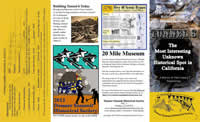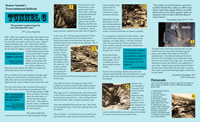It was a race between the Central Pacific Railroad, heading east, and the Union Pacific Railroad, heading west. They earned Federal money depending on the amount of track they laid. The faster they laid track the more money they got. They would meet somewhere in the middle. Each railroad wanted to lay as much track as possible.
Overcoming the Sierra was the toughest challenge along the entire Continental route. To cross the Sierra the CPRR had to fill and bridge canyons, move rock and soil, reduce grades, down trees, build snowsheds, and bore tunnels. It was the tunnels that slowed them the most. The Sierra is solid granite and the tunnels had to go through that granite, the hardest rock on the continent. There were 15 Sierra tunnels.
The longest tunnel was Tunnel 6 on the Sierra Summit at 7000 feet in elevation. It is 1659 feet in length. To make the job more difficult it has a thirty foot elevation change over its length and it has a slight curve. It was built from four directions at once: from the west and east outside in, and from the inside out to the west and each. Even with the curve and the elevation change, all four tunnel headings were off only a little when they all joined.
To make the job even harder, 34 feet of snow fall, on average, on Donner Summit each winter. The Chinese workers who made up 80-90% of the work force had to live in the cold, sometimes not seeing the sun for weeks at a time. They endured the cold, avalanche, rock slides, accident, sickness, and frostbite as they worked 10-12 hour days six days a week.
Tunnel 6 was rightly considered an engineering marvel of the 19th century. To celebrate that we have built five exhibits about Tunnel 6: the tunnel, its construction, the Chinese workers and their lives, and contemporary views of Tunnel 6.
Click on the images to the right and you will open the exhibits as large jpgs. Click on the images below to download our Tunnel 6 brochure (8.5 X 14 inches PDF).
Link to the Tunnel 6 Today Gallery



